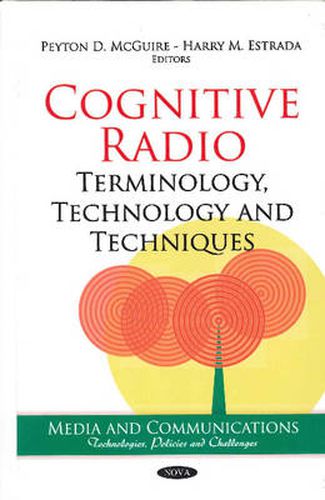Readings Newsletter
Become a Readings Member to make your shopping experience even easier.
Sign in or sign up for free!
You’re not far away from qualifying for FREE standard shipping within Australia
You’ve qualified for FREE standard shipping within Australia
The cart is loading…






Cognitive radio is a radio that can sense, learn and adapt to the surrounding environment according to its inner and outer stimuli. A primary feature of cognitive radios is the ability to adapt the transmission parameters given a dynamic wireless environment. In this book, the cognitive radio adaptation is formalised and four evolutionary algorithms are explored and used to intelligently solve this problem and determine the optimal parameters for a given situation. Moreover, the authors of this book limit the scope of cognition to reduce mutual interference between CR-based rental (unlicensed) users and licensed users (LUs) and in providing coexistence between them. The modulation strategies employed to realise a co-existence between the CR-based rental system and the licensed system are introduced. In addition, a novel dynamic spectrum sharing scheme combining spectrum adaptation and MIMO-OFDM for cognitive radio system is proposed. In order to improve spectrum efficiency and reduce computational complexity, a simple power allocation algorithm is proposed as well. Other chapters report recent results on policy-based self-management towards self-adaptive and Cognitive Radio Systems (CRS). Its focus is not on self-properties of cognitive radio systems but on self-learning policy and cognition.
$9.00 standard shipping within Australia
FREE standard shipping within Australia for orders over $100.00
Express & International shipping calculated at checkout
Cognitive radio is a radio that can sense, learn and adapt to the surrounding environment according to its inner and outer stimuli. A primary feature of cognitive radios is the ability to adapt the transmission parameters given a dynamic wireless environment. In this book, the cognitive radio adaptation is formalised and four evolutionary algorithms are explored and used to intelligently solve this problem and determine the optimal parameters for a given situation. Moreover, the authors of this book limit the scope of cognition to reduce mutual interference between CR-based rental (unlicensed) users and licensed users (LUs) and in providing coexistence between them. The modulation strategies employed to realise a co-existence between the CR-based rental system and the licensed system are introduced. In addition, a novel dynamic spectrum sharing scheme combining spectrum adaptation and MIMO-OFDM for cognitive radio system is proposed. In order to improve spectrum efficiency and reduce computational complexity, a simple power allocation algorithm is proposed as well. Other chapters report recent results on policy-based self-management towards self-adaptive and Cognitive Radio Systems (CRS). Its focus is not on self-properties of cognitive radio systems but on self-learning policy and cognition.